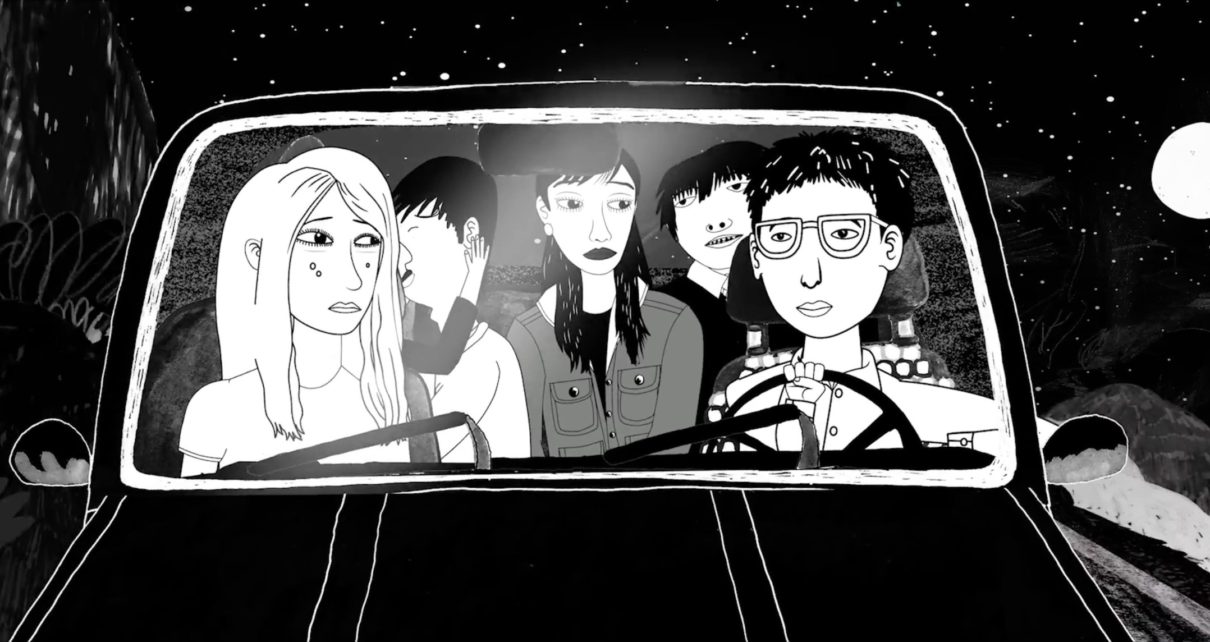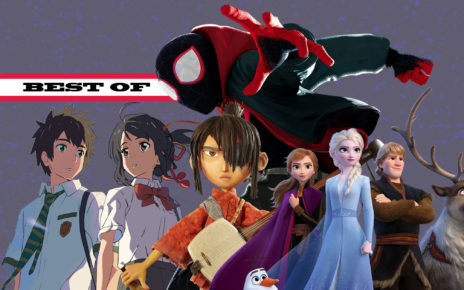AIF Chats
Part of a series of chats we had with directors at the Animation Is Film Festival.
Few films this year carve as closely to reality as Virus Tropical, a South American animated feature that has steadily amassed festival acclaim over the last few months. Adapted from Colombian-Ecuadorian artist Power Paola’s 2011 graphic novel of the same name and directed by Colombian artist Santiago Caicedo, the film tells the coming-of-age story of a predominantly female family’s struggle to grow and find happiness through the joys and hardships of adolescence. The autobiographical story begins with Paola’s birth and follows her up to young adulthood, often through dark and unforgiving circumstance, and showcases the relationships and friendships that come and go as one grows up and struggles to find a fulfilling existence.
“Art-wise… we had to be really strong,” Caicedo explains, sitting beside Paola, when The Dot and Line caught up with the director and artist together at the Animation Is Film Festival in Los Angeles. “It was important for us, or for me as the director, to have Paola’s life present throughout the whole film. It would feel like a hand drawing, raw, hard, primitive — ”
“And punk!” Paola interjects.
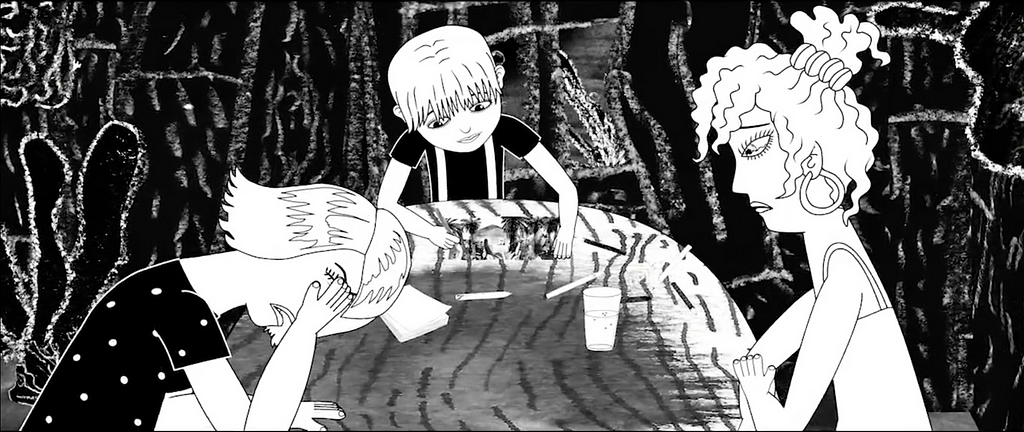
You’d be forgiven for citing “punk” as a predominant influence in Virus Tropical. It’s all about the rebellious and awkward transitions of growing up, and chaos and viscera seem present in every frame of the film thanks to its striking, mostly monochromatic imagery and matter-of-fact views on sex, patriarchy, and society. The film is animated in a gritty, choppy style that forces viewers to pay attention to texture and the movements of its characters in highly detailed environments — whether those characters are moving before backgrounds filled with leaves or within the confines of a bedroom. Its color palette is black-and-white, but it’s not all black-and-white, as Paola points out.
“At first, Santiago thought to make it color, but then we said no. We want to talk more about the drawing and that you see all the material used to draw — different paints, markers, different papers,” she says. “We wanted to show all of this. It’s black-and-white, but you can see the different ink of the markers and the purples.”
That sketchier style matches the dysfunctional dynamic of the film’s characters, and its bleakness lends itself to the film’s plot. Virus Tropical’s art frankly depicts a world with grim realities — from childbirth, to drug use, to the mental and emotional strain of being a woman in a patriarchal society. This is a film that begins with its main character, Paola, being conceived. While all the parts are stylized, they’re all there. Sex, in particular, plays a major role in the film’s plot and themes.
“[Sex] is, like, a taboo thing in Latin America,” Paola says. “Those small things, that are common and important for everybody, I wanted to tell in a simple way.”
“It was a huge responsibility to tell the story from the point of view of a girl, a woman.”
“It is a big issue in growing up,” Caicedo says. “Sexuality is something that happens when you develop as a teenager. So for me, it was really important to have sex as something that happens in life regularly, without any bad thoughts. It was important to have the body as something really important. We see child nudity… explicit sex… it’s more in a way that shows vulnerability. Or just how your body just is.”
“Take out the taboo and show it like it is,” Paola says, finishing Caicedo’s thought.
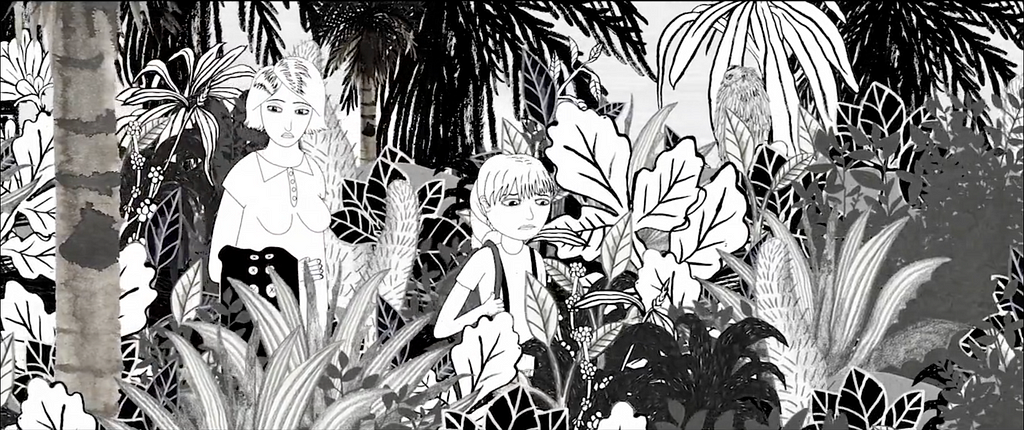
In the film, it’s Paola’s mother — through that early sex scene—that introduces that theme. She’s also one of the most memorable characters in all of Virus Tropical, and at the story’s beginning, she is still pregnant with the main character. She is forced to raise her three daughters alone with resilience and drive, and the most impactful scenes of the story revolve around her struggles and sacrifices as a mother.
“In Latin America, a lot of women raise up children alone and have to find their way to go on in life,” Paola says. “And it’s not easy. I wanted to show that. Of course in my family, but in the context of Latin America as well.”
It doesn’t end with her mother, either. More than anything — through Paola and those she interacts with — Virus Tropical tells the story of women and the systems and circumstances around them.
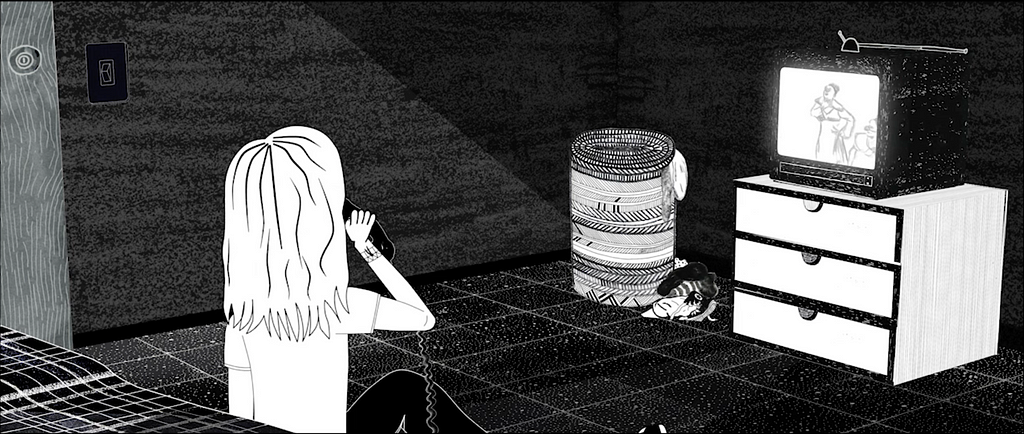
“For me, it was a huge responsibility,” Caicedo says, “to tell the story from the point of view of a girl, a woman — ”
“ — of different women,” Paola says, cutting him off again.
The film ends on an open-ended note. It offers little closure and no easy answers, as Paola is kicked out of her sister’s house and wanders the streets with a newly impassioned drive for life. Paola and Caicedo interpret it with resounding optimism.
“It shows the freedom,” Paola says. “You can be whoever you want! You have to be like truthful with your personality and nature.”
“And the idea was to end the film with a start,” Caicedo says. “It’s not really an end. It’s a start.”
Thanks for reading The Dot and Line, where we talk about animation of all kinds. Don’t forget to for this article and follow us on Twitter and Facebook.


